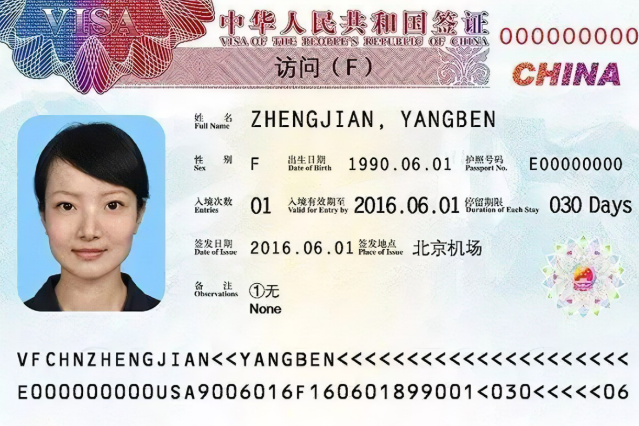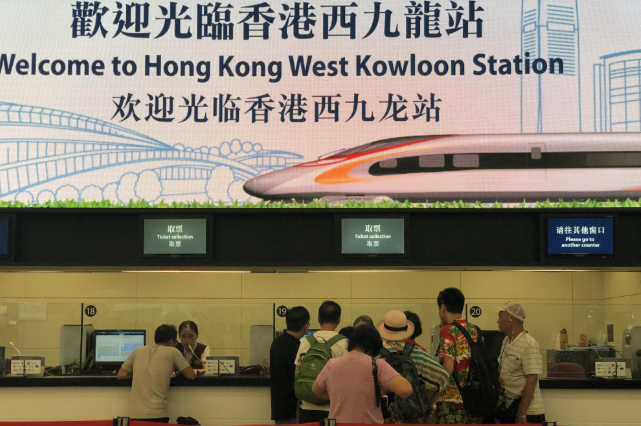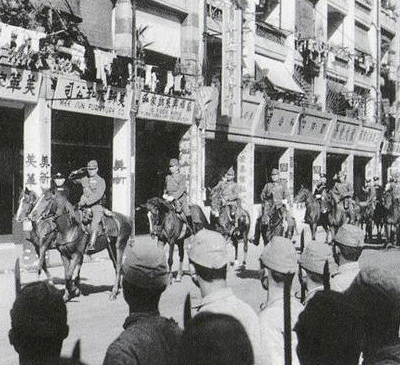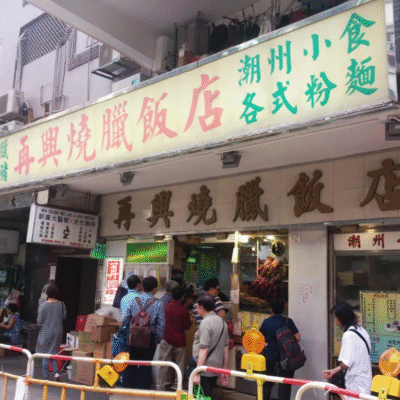You may not know that, historically, Hong Kong and Shenzhen were part of the same city—Bao’an County. Later, in the late Qing Dynasty, Britain gained control of Hong Kong Island and Kowloon through the Treaty of Nanking, and leased the New Territories, gradually creating the current division between Hong Kong and Shenzhen.
If you’re visiting Hong Kong, it’s worth taking the opportunity to explore Shenzhen, one of China’s most developed cities. The two cities are just 18 miles (about 30 kilometers) apart, making travel between them very convenient.

Need a Visa to Travel from Hong Kong to Shenzhen?
Since Hong Kong and Shenzhen belong to different administrative regions, Western visitors need a visa to travel from Hong Kong to Shenzhen. However, if you already hold a valid Chinese visa, you can travel directly from Hong Kong to Shenzhen.

If your country is eligible for China’s visa exemption policy, you can travel directly from Hong Kong to Shenzhen without the need for a visa. However, if your country is not on the visa-exempt list, you will need to apply for a temporary Shenzhen visa at certain border crossings, such as Luohu Port or Shenzhen Bay Port.
This visa is usually short-term and applies to most foreigners, though the requirements may vary depending on the port.
The following visa information was collected through research on official Chinese government websites:
| Item | Shenzhen Port Visa (SEZ Tourist Visa) | 144-Hour Visa-Free Transit Policy |
|---|---|---|
| Target Audience | Foreign travelers without a Chinese visa visiting Shenzhen | Foreign nationals with onward tickets to a third country |
| Eligible Countries | Varies by port; confirm with visa authorities | 54 countries (e.g., USA, Canada, UK, France, Germany, Japan, Australia) |
| Ports of Entry | Luohu Port, Shenzhen Bay Port, etc. | Guangzhou Baiyun Airport, Shenzhen Bao’an Airport, Jieyang Chaoshan Airport |
| Duration of Stay | Usually 3–5 days (subject to port authority decision) | Up to 144 hours (6 days) |
| Permitted Travel Area | Only within Shenzhen city limits | Entire Guangdong Province |
| Application Requirements | Valid passport + required documents (inquire at port) | Valid passport + onward ticket to a third country/region |
| Pre-application Available | No – must apply on arrival at designated ports | No – apply upon arrival at eligible airports |
| Certainty of Issuance | Not guaranteed; advised to check in advance | More stable policy, but still recommended to confirm latest info |
| References | CNIPA, Guangdong Public Security Bureau, Chinese Embassies | Guangdong Public Security Bureau, Shenzhen Port Office, Wikipedia |
| Remarks | Issuance depends on nationality and port’s discretion | Ideal for travelers transiting from Hong Kong to a third country |
Key Border Ports in Shenzhen
| Port Name | Opening Hours | Transport Connections | Remarks |
|---|---|---|---|
| Luohu Port | 06:30 – 24:00 | MTR East Rail Line (Hong Kong), Shenzhen Metro Line 1 | High passenger volume; efficient for most travelers |
| Futian Port | 06:30 – 22:30 | MTR East Rail Line (Hong Kong), Shenzhen Metro Line 4 | Modern facilities and fast customs clearance |
| Shenzhen Bay Port | 06:30 – 24:00 | Buses, Taxis | Ideal for travelers using cross-border buses or private vehicles |
| Huanggang Port | 24 hours | Buses, Taxis | The only 24/7 border crossing; suitable for late-night or early-morning transit |
How to Travel from Hong Kong to Shenzhen?
In the past, when I traveled from Shenzhen to Hong Kong to meet clients, I usually chose to take the high-speed train, as it only took about 15-20 minutes from Shenzhen North Station to Hong Kong West Kowloon Station, which was very convenient.

If I had more time, I would take the MTR from Hung Hom Station in Hong Kong, passing through the Lo Wu or Lok Ma Chau checkpoints, which takes about 45-60 minutes. Both options are efficient and hassle-free, making them perfect for quick and convenient business trips.
Here is my advice for all the travelers:
| Mode of Transport | Description | Departure Station | Arrival Station | Travel Time | Best For |
|---|---|---|---|---|---|
| MTR (East Rail Line) | Convenient and frequent option | Hung Hom Station, Hong Kong | Lo Wu or Lok Ma Chau Station, Shenzhen | 45-60 minutes | Ideal for most tourists |
| High-speed Rail | Fast and comfortable option | Hong Kong West Kowloon Station | Shenzhen North Station | 15-20 minutes | Best for travelers in a hurry |
Why Avoid Other Travel Options to Shenzhen?
From a personal perspective, I don’t recommend other modes of transport, such as buses or taxis, mainly because they are often affected by traffic congestion, especially during peak hours, which can significantly lengthen travel time. Additionally, the border crossing process is more complicated, which can waste a lot of time. Taxis or private cars are also much more expensive, especially for cross-border travel, compared to the cost of the MTR or high-speed rail.
Moreover, buses and taxis are less comfortable than high-speed trains, and long journeys can be uncomfortable. Therefore, I prefer taking the MTR or high-speed rail, as they are not only quick and convenient but also reasonably priced, with better comfort and efficiency.
How to Travel on the MTR in Hong Kong
Here are the steps for traveling on the Hong Kong MTR:
| Step | Description |
|---|---|
| Find the Nearest MTR Station | Use Google Maps or a similar app to input your destination and find the nearest MTR station. MTR stations in Hong Kong may not be as obvious as in mainland China, so pay attention to your surroundings. |
| Entering the Station | – Octopus Card: Simply tap the card to enter the station. Make sure the balance is sufficient. – Mobile QR Code: If you don’t have an Octopus Card, you can use WeChat’s “Hong Kong Travel Code” or Alipay’s “Hong Kong Travel Code” to scan for entry. Make sure to use gates with a purple logo or automatic opening gates when scanning. |
| Choosing the Line and Direction | Before entering, confirm the MTR line and direction you need to take. The station’s directional signs and electronic screens will provide detailed guidance. When taking the East Rail Line to Lo Wu, pay special attention to the terminal station displayed on the screen. |
| Exiting the Station | Upon reaching your destination, exit in the same way. Octopus Card users simply tap out; QR code users need to scan again. Pay attention to the exit signs to ensure you exit in the correct direction. |
Tip: If you don’t have WeChat or an Octopus card, you can still purchase a single journey ticket at the ticket vending machines or the manned ticket counters. Select your destination, and the fare will be displayed automatically. Keep the ticket safe when entering the station, as you will need to insert it again when exiting. If you have any questions, staff are available to assist you.
If you want to purchase an Octopus card but are unsure how to do so, please refer to this link for detailed instructions on how to purchase it.
How to Take the High-Speed Train in Hong Kong
Taking the high-speed train can be more complex than the subway, but following my steps will help you avoid many issues. If you encounter any difficulties, please don’t hesitate to contact station staff for assistance. For further assistance, you can also refer to the 12315 consumer service in China.
| Step | Description |
|---|---|
| Go to Hong Kong West Kowloon Station | The high-speed train departs from Hong Kong West Kowloon Station. You can easily reach the station by subway or other transportation methods. |
| Purchase Tickets | – Online Purchase: Buy tickets in advance through the China Railway 12306 website, relevant high-speed train apps, or other platforms. – On-Site Purchase: Tickets can also be bought at ticket counters or ticket vending machines at Hong Kong West Kowloon Station. |
| Complete Immigration Procedures | – Exit China Procedures: Complete the Chinese exit procedures at the designated area in Hong Kong West Kowloon Station, where staff will check your passport and visa (if required). – Enter Hong Kong Procedures: Complete Hong Kong entry procedures, where your Hong Kong entry permit will be checked. |
| Boarding and Station Directions | Follow station signs to the appropriate waiting area and platform. Hong Kong West Kowloon Station has clear signage to guide you. |
| Take the High-Speed Train | After entering the waiting area, wait for the train’s arrival. Be sure to arrive at the platform on time and have your ticket and ID ready. |
| Arrive at Destination | Once the train arrives at your destination (e.g., Guangzhou, Shenzhen), follow the signs to complete the exit procedure. |
Ticket price from Hong Kong to Shenzhen
| Transportation Mode | From | To | Ticket Price Range | Travel Time |
|---|---|---|---|---|
| Metro (East Rail Line) | Hong Kong Mong Kok, Kowloon Tong, etc. | Shenzhen Lo Wu, Lok Ma Chau | 40-60 HKD | 45 minutes to 1 hour |
| High-Speed Train (Guangzhou-Shenzhen-Hong Kong Express Rail Link) | Hong Kong West Kowloon Station | Shenzhen Futian Station | 80-115 HKD | 15-20 minutes |
| High-Speed Train (Guangzhou-Shenzhen-Hong Kong Express Rail Link) | Hong Kong West Kowloon Station | Shenzhen North Station | 100-130 HKD | 15-20 minutes |
Final Advice
Traveling from Hong Kong to Shenzhen is generally quite convenient. I usually choose either the metro or the high-speed train, as both options are fast and comfortable. The metro ride takes around 45 minutes, while the high-speed train is even faster—just 15 minutes. Every time I take the high-speed train, it feels like I arrive in Shenzhen in the blink of an eye. It’s a real time-saver.
I’ve also tried taking the bus and taxis in the past, but honestly, they’re not very cost-effective. Especially during rush hour, traffic jams are common, and the fares are usually higher compared to the metro or train. The overall experience is noticeably less pleasant.
As for visas, even though Hong Kong and Shenzhen are geographically close, not having the appropriate visa can cause significant inconvenience. That’s why I always make sure to check my visa requirements before traveling to avoid any last-minute issues.
Overall, getting from Hong Kong to Shenzhen is quite straightforward. Choosing the right mode of transportation can save a lot of time and help avoid unnecessary trouble.
Frequently Asked Questions (FAQ)
| Question | Answer |
|---|---|
| Q1: Can I carry large luggage when crossing the border? | Yes, but make sure your luggage complies with security regulations and size/weight limits for metro or high-speed rail services. |
| Q2: Do I need to fill out a health declaration form during border crossing? | According to the latest policies, some ports may still require a health declaration. It’s recommended to complete the form via the relevant app in advance. |
| Q3: Can I use a credit card to pay for transportation in Shenzhen? | Shenzhen Metro and some bus lines accept UnionPay, Visa, and MasterCard. However, it’s advisable to carry cash or use mobile payment just in case. |
| Q4: Is free Wi-Fi or SIM card service available during border crossing? | Some ports offer free Wi-Fi and nearby kiosks for purchasing SIM cards. Availability may vary by location. |





